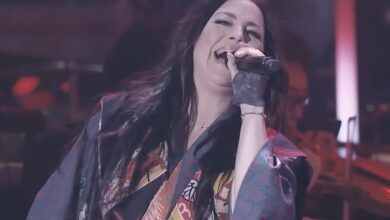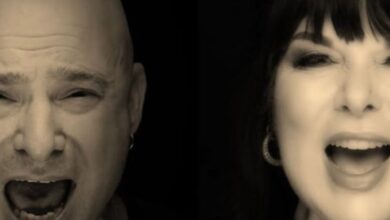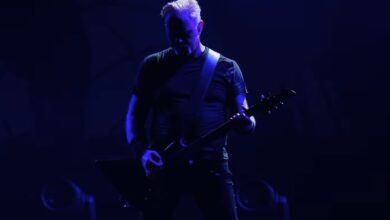Metallica’s toy-instrument jam of “Enter Sandman” with Jimmy Fallon soared to viral status, collecting over 25 million views for its whimsical yet inspired spin on the timeless rock anthem
Back in 2016, an unexpectedly inventive segment on The Tonight Show Starring Jimmy Fallon demonstrated just how elastic musical genres can be when artists are willing to experiment. Instead of unleashing their usual wall of amplifiers and double-kick fury, Metallica exchanged their formidable gear for a rainbow array of toy instruments—pint-sized xylophones, neon-colored recorders, and clattering plastic shakers. Joined by Fallon and The Roots, the metal titans reinvented “Enter Sandman” with wide-eyed playfulness, proving that a song built for stadium decibels could thrive equally well amid kindergarten clatter without losing its essential punch.
The tiny rehearsal nook they crammed into only intensified the segment’s kinetic energy; bodies, props, and microphones were squeezed so close that every grin and raised eyebrow was visible. Instead of towering Marshall stacks, there were lunch-box keyboards and rainbow bells. Yet the atmosphere pulsed with anticipation worthy of any arena. Hetfield growled into the toy mic with theatrical glee, Fallon countered with boundless enthusiasm, and The Roots navigated the toybox chaos with a professionalism that kept the groove tight despite the deliberately lo-fi tools scattered across the floor.
Surprisingly, stripping “Enter Sandman” of its trademark distortion and thunderous backbeat didn’t diminish the composition’s weight; it reframed it, spotlighting the sturdy melodic bones beneath the crunch. Hetfield’s grinning delivery underscored just how enjoyable the chaos had become, while Fallon’s exuberant harmonies fused late-night comedy with childhood nostalgia. Viewers could sense that every participant was genuinely present, fully invested in turning a heavy-metal lullaby into something equal parts ridiculous and riveting, a balancing act that rarely succeeds on television.
Each percussive tap—from plastic recorders’ whistle-tones to the click-clack of miniature castanets—added layers of cheerful absurdity that somehow amplified the song’s tension. As the famously hushed spoken-word bridge approached, everyone leaned in, coaxing gentle tones from the smallest instruments they could find. Then, in a synchronized burst, the ensemble erupted back into full toy-orchestra mode, filling the cramped space with a frenzy of bells, rattles, and unbridled laughs. The playful bedlam illustrated that musical daring often thrives on risk, not refinement.
Seeing Metallica—whose reputation rests on incendiary performances of tracks like “Battery,” “One,” and “Master of Puppets”—embrace such silliness felt genuinely disarming. There was no winking irony or half-hearted delivery: the band threw themselves into the concept as though finger cymbals and toy drums were their natural habitat. That wholehearted commitment unlocked a new dimension of fan appreciation, sending social feeds into overdrive as clips spread faster than most polished music videos manage in today’s crowded digital landscape.
What emerged was a rare cultural crossroads where die-hard metalheads, casual late-night viewers, and curious click-through surfers found common ground. The sight of James Hetfield’s gravelly roar riding a wave of toy bells shouldn’t have worked by any conventional metric, yet it transcended novelty to become pure celebration. Everyone—regardless of preferred genre—seemed to sense the simple joy radiating from the cramped studio, and that joy became contagious, pushing the performance toward instant-classic status on countless watch lists.
Four decades into their career, Metallica have shown a consistent appetite for reinvention—whether partnering with the San Francisco Symphony, experimenting with theatrical stage designs, or, as here, weaponizing a bucket of preschool percussion. The toy-instrument venture wasn’t mere parody; it highlighted the group’s confidence in their songwriting, their willingness to expose the skeleton of a track that usually arrives cloaked in distortion and pyrotechnics. By trading distortion pedals for toy keyboards, they demonstrated how flexibility and humor can fortify, rather than erode, a band’s legacy.
While many of Metallica’s thrash contemporaries cling tightly to the aesthetics of their heyday, Hetfield, Hammett, Ulrich, and Trujillo continue pushing outward, refusing to let familiarity calcify into predictability. This Tonight Show bit functioned as a living testament to that creative restlessness. It wasn’t a lampoon of their past; it was a salute to it, filtered through spontaneous fun. In reimagining themselves so radically, they not only entertained but also reminded fans that great art survives translation into the most unlikely dialects.
Crucial to the skit’s seamless execution was The Roots, whose chameleonic musicianship has long been a cornerstone of Fallon’s format. They balanced humor and discipline perfectly, providing rhythmic glue with egg shakers, toy timpani, and pint-size cymbals, ensuring the performance never devolved into pointless noise. Their deft touch allowed Metallica’s riffs to breathe, helping each melodic phrase land with both comedic levity and unmistakable rock heft, showcasing why adaptability is sometimes the highest form of virtuosity.
Metallica have carried that spirit of exploration forward, releasing the ambitious 72 Seasons album in 2023 and staging “No-Repeat Weekends” on their globe-spanning M72 Tour. Whether backed by full symphonic orchestras or elbow-to-elbow with late-night show hosts armed with toy glockenspiels, they continually affirm that legacy and innovation can coexist. That fearless blend keeps their story evolving, their audience expanding, and, most importantly, their art form alive and exhilarating for generations to come.





